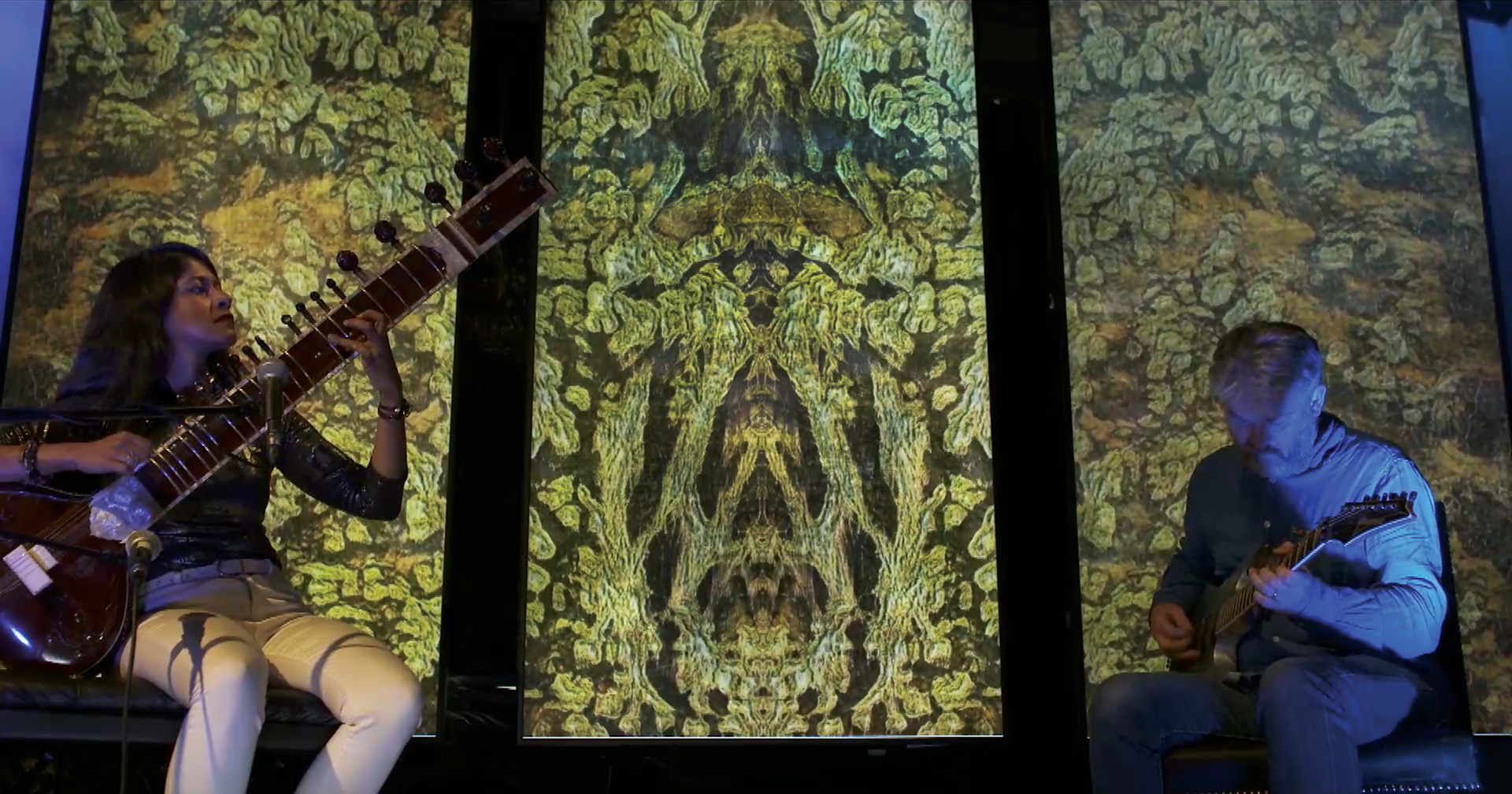“Groupthink: Telepresence and agency during live performance” by Hossaini, Gingrich, Rahman, Grierson, Murr, et al. …
Conference:
Type(s):
Entry Number: 07
Title:
- Groupthink: Telepresence and agency during live performance
Presenter(s)/Author(s):
Abstract:
Live performers often describe “playing to the audience” as shifts in emphasis, timing and even content according to perceived audience reactions. Traditional staging allows the transmission of physiological signals through the audience’s eyes, skin, odor, breathing, vocalizations and motions such as dancing, stamping and clapping, some of which are audible. The Internet and other mass media broaden access to live performance, but they efface traditional channels for “liveness,” which we specify as physiological feedback loops that bind performers and audience through shared agency. During online events, contemporary performers enjoy text and icon-based feedback, but current technology limits expression of physiological reactions by remote audiences. Looking to a future Internet of Neurons where humans and AI co-create via neurophysiological interfaces, this paper examines the possibility of reestablishing audience agency during live performance by using hemodynamic sensors while exploring the potential of AI as a creative collaborator.
References:
Matthew Davidson, Will Mithen, Hinze Hogendoorn, Jeroen van Boxtel, Naotsugu Tsuchiya. 2020. The SSVEP tracks attention, not consciousness, during perceptual filling-in. eLife 2020;9:e60031. DOI: 10.7554/eLife.60031Google Scholar
Makoto Iwanaga, Asami Kobayashi, Chie Kawasaki. 2005. Heart rate variability with repetitive exposure to music. Biological Psychology. https://doi.org/10.1016/j.biopsycho.2004.11.015Google Scholar
Richard Lewontin, Richard Levins. 1985. The Dialectical Biologist. Harvard University Press.Google Scholar
Eiluned Pearce, Jacques Launey, Robin Dunbar. 2015. The ice-breaker effect: singing mediates fast social bonding, Royal Society. https://doi.org/10.1098/rsos.150221Google Scholar
Flora Lysen. 2019. The interface is the (art)work: EEG-feedback, circuited selves and the rise of real-time brainmedia. In Anton Nijholt, ed. Brain Art: Brain-Computer Interfaces for Artistic Expression. Springer.Google Scholar
Daniel Meyer-Dinkgräf. 2015. Liveness: Phelan, Auslander, and After. Journal of Dramatic Theory and Criticism, Vol. 29 no. 2.Google Scholar
MoD. 2022. https://www.army.mod.uk/our-future/human-machine-teaming/Google Scholar
Andrew Ng. 2021. https://datacentricai.org/Google Scholar
Daniel McDuff, Izumi Nishidate, Kazuya Nakano, Hideaki Haneishi, Yuta Aoki, Chihiro Tanabe, Kyuichi Niizeki, Yoshihisa Aizu. 2020. Non-contact imaging of peripheral hemodynamics during cognitive and psychological stressors. Nature Scientific Reports 10, 10884. https://doi.org/10.1038/s41598-020-67647-6Google ScholarCross Ref
Robert Romanyshyn. 1989. Technology as Symptom and Dream, Routledge.Google Scholar
Diego Sempreboni, Luca Viganò. 2021. Privacy, Security and Trust in the Internet of Neurons. In: Groß, T., Viganò, L. (eds) Socio-Technical Aspects in Security and Trust. Lecture Notes in Computer Science, Vol. 12812. Springer. https://doi.org/10.1007/978-3-030-79318-0_11Google ScholarDigital Library
Merlin Sheldrake. 2020. Entangled Life: How Fungi Make Our World, Change Our Minds and Shape the Future. Random House.Google Scholar
Stelarc. 2015. http://stelarc.org/?catID=20353Google Scholar
Avanash Thakare, Ranjeetra Mehrotra, Ayushi Singh. 2017. Effect of music tempo on exercise performance and heart rate among young adults. International journal of physiology, pathophysiology and pharmacology, 9(2), 35–39.Google Scholar
Craig Vear. 2019. The Digital Score: Musicianship, Creativity and Innovation. New York: Routledge.Google Scholar
Björn Vickhoff, Helge Malmgren, Rickard Åström, Gunnar Nyberg, Seth-Reino Ekström, Mathias Engwall, Johan Snygg, Michael Nilsson, Rebecka Jörnsten. 2013. Music structure determines heart rate variability of singers. Frontiers in Psychology, Vol. 4.Google ScholarCross Ref
Daniel Weinstein, Jacques Launey, Eiluned Pearce, Robin Dunbar, Lauren Stewart. 2016. Singing and social bonding: changes in connectivity and pain threshold as a function of group size. Evolution and Human Behavior, Vol. 37, Issue 2.Google ScholarCross Ref
Hao Yo Wu, Michael Rubinstein, Eugene Shih, John Guttag, Fredo Durand, William Freeman. 2012. http://people.csail.mit.edu/mrub/papers/vidmag.pdfGoogle Scholar
Shama Rahman. 2022. https://www.neurocreate.co.uk/Google Scholar




